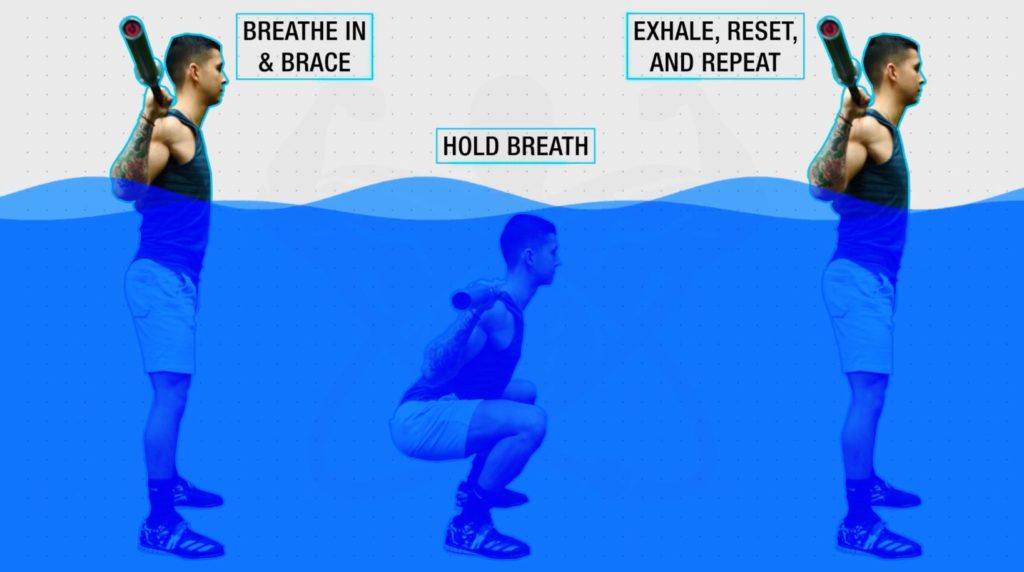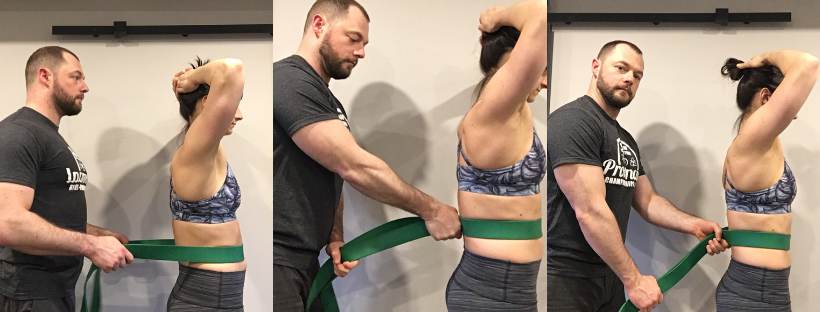The Importance of Proper Breathing in Squats
Proper breathing during squats plays a crucial role in enhancing stability, strength, and form. By synchronizing breath with movement, you create a strong foundation for executing squats effectively and safely. Inhaling during the eccentric (lowering) phase and exhaling during the concentric (lifting) phase is the recommended breathing pattern. This approach helps maintain core stability, allowing for better control of the weight and reduced risk of injury.
How to Optimize Breathing and Squat Synchronization
To maximize the benefits of squats, it is essential to synchronize breath and movement. The ideal breathing pattern involves inhaling during the eccentric (lowering) phase and exhaling during the concentric (lifting) phase. This approach, often referred to as “valsalva maneuver,” helps maintain core stability and control over the weight. Core bracing, or engaging the abdominal muscles, is another crucial aspect of proper breathing during squats. By bracing the core, you create intra-abdominal pressure, which stabilizes the spine and pelvis, allowing for safer and more efficient squat execution.
Recognizing and Addressing Breathing Inaccuracies in Squats
Recognizing and correcting common breathing mistakes during squats is essential for increased safety and efficiency. Two prevalent issues are breath-holding and rapid breathing. Breath-holding can lead to increased blood pressure and strain on the heart, while rapid breathing may result in insufficient oxygen intake and reduced stability. To address breath-holding, focus on maintaining a steady breathing pattern throughout the squat movement. For rapid breathing, practice diaphragmatic breathing, which involves taking slow, deep breaths using the diaphragm rather than the chest. This technique can help improve oxygen intake and promote better stability during squats.
How Adequate Breathing Enhances Squat Progression
Implementing proper breathing techniques can significantly improve squat performance, leading to greater strength, muscle growth, and overall progression. Deep, controlled breathing during squats helps maintain core stability, allowing for better control of the weight and more efficient movement. Proper breathing also ensures adequate oxygen supply to the muscles, promoting muscle growth and recovery. By focusing on synchronizing breath and movement, lifters can enhance their squat performance, reduce the risk of injury, and achieve their fitness goals more effectively.
Strategies for Incorporating Breathing Practice into Your Squat Routine
Integrating breathing drills and exercises into your squat warm-up and workout can significantly improve your overall performance. Begin by practicing deep, controlled breathing during your warm-up to engage your core and promote stability. Incorporate breathing exercises, such as box breathing (inhale for four counts, hold for four counts, exhale for four counts, and hold for four counts) or diaphragmatic breathing, to improve lung capacity and oxygen intake. Additionally, consider using visualization techniques to synchronize breath and movement, further enhancing your squat performance. By consistently practicing proper breathing techniques, you can ensure continuous improvement and maintain optimal squat performance.
Selecting Equipment to Perfect Breathing Techniques
Various tools and equipment can aid in mastering breathing techniques during squats, enhancing stability, strength, and form. Resistance bands are an excellent option for adding difficulty to breathing exercises, as they require increased core engagement and control. Breathing trainers, such as the PowerLung or Expand-a-Lung, can help improve lung capacity and diaphragm strength, resulting in more efficient breathing during squats. When selecting equipment, consider your specific needs, goals, and current fitness level to ensure the best possible results and continuous improvement in your squat performance.
Expert Opinions and Research on Breathing and Squats
Numerous experts and scientific studies emphasize the importance of proper breathing during squats. Renowned strength coach Mark Rippetoe stresses the significance of the valsalva maneuver, which involves taking a deep breath and holding it during the eccentric (lowering) phase of the squat, followed by exhaling during the concentric (lifting) phase. This technique helps maintain core stability and enhance overall performance. Research published in the Journal of Strength and Conditioning Research found that utilizing the valsalva maneuver during squats resulted in greater muscle activation and force production compared to shallow breathing. By adhering to these expert opinions and research findings, individuals can optimize their squat performance and reap the full benefits of this essential exercise.





